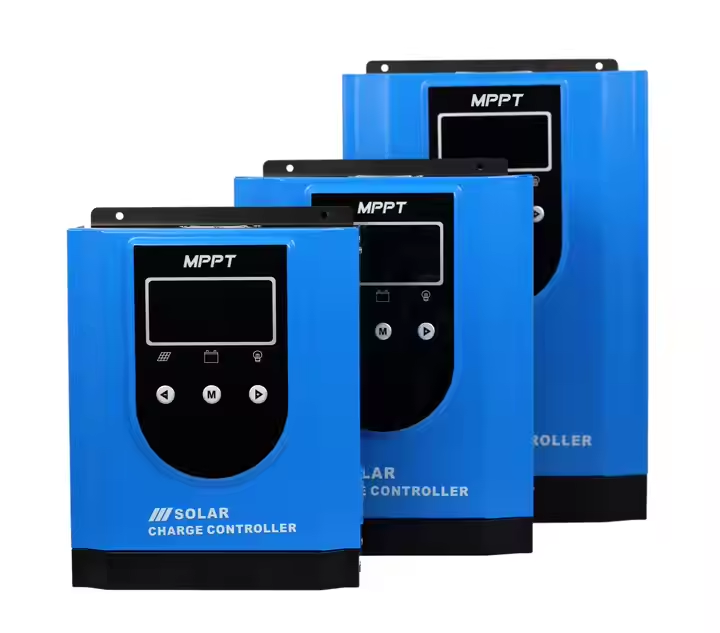I. Introduction
With the rapid growth of renewable energy solutions for residential use, more homeowners are turning to solar power to save on electricity bills, reduce their carbon footprint, and gain energy independence. While many focus on solar panels and inverters, a vital component often overlooked is the solar charge controller. Upgrading your home with a high-quality solar charge controller can optimize energy management, protect your battery investment, and extend the life of your entire solar system. This article explores the top benefits of upgrading your home with a solar charge controller and provides practical tips to help you achieve a more efficient, secure, and cost-effective solar energy system.
II. What Is a Solar Charge Controller?
A. Definition and Role
A solar charge controller is a device that regulates the power flowing from solar panels to the battery bank. Its primary functions include ensuring the batteries are charged efficiently during the day and preventing reverse current flow at night—thus safeguarding your stored energy.
B. Types of Controllers
PWM (Pulse Width Modulation) Controllers:
Typically used in smaller or simpler systems, PWM controllers offer a cost-effective solution for managing battery charging.
MPPT (Maximum Power Point Tracking) Controllers:
These controllers are more sophisticated and efficient, maximizing the output from your solar panels by continuously tracking and adjusting to the optimal power point, especially beneficial in larger or complex systems.
III. Top Benefits of Upgrading Your Home with a Solar Charge Controller
1. Improved Energy Efficiency
Upgrading to a modern solar charge controller—especially an MPPT model—can significantly increase your solar system’s efficiency. By optimizing the match between the solar panels and the battery bank, you can harness up to 30% more energy, resulting in better overall performance and higher energy yield.
2. Extended Battery Life
A premium charge controller protects your batteries by preventing overcharging and deep discharge. This means that your battery bank will last longer and perform more consistently, reducing replacement costs and ensuring that your investment in energy storage remains sound over the long term.
3. Smarter Energy Management
Advanced charge controllers come equipped with features such as load management, automatic switching between charging modes, and adjustable Low Voltage Disconnect (LVD) settings. These intelligent capabilities allow your system to manage energy distribution more effectively, ensuring that critical loads receive power when needed and optimizing battery performance.
4. Real-Time Monitoring and Control
Many modern solar charge controllers include integrated displays or remote monitoring capabilities. This allows you to track essential metrics like voltage, current, and overall system performance in real time. With better insight into your energy production and consumption, you can make informed adjustments to optimize efficiency further.
5. Enhanced System Safety
Upgrading your controller means benefiting from built-in safety features such as overcharge, over-discharge, and short-circuit protection. These safety mechanisms protect both your batteries and the overall solar system, reducing the risk of damage and potential hazards such as fires.
6. Future-Proofing Your Solar System
Modern charge controllers are designed with scalability in mind. They support multi-panel configurations and various battery types, making it easier to expand your system as your energy needs grow. Investing in a quality charge controller now lays the foundation for future upgrades without the need for a complete system overhaul.
7. Reduced Energy Costs
A more efficient solar charge controller maximizes the energy that is stored and used, which can significantly lower your reliance on grid electricity. In the long run, this translates to reduced utility bills and a quicker return on investment.
8. Increased Home Value
Homeowners who invest in renewable energy systems, especially those optimized with modern technology like advanced charge controllers, often see an increase in property value. Energy efficiency improvements make a home more attractive to potential buyers, offering long-term benefits both environmentally and financially.
IV. Upgrading and Choosing the Right Solar Charge Controller: Practical Tips
A. Determining Your Needs
Assess Your Energy Usage:
Evaluate your monthly and annual electricity consumption to determine the system capacity you require.Review Your Current Setup:
Consider whether your existing system components are compatible with a new, upgraded charge controller.
B. Selecting Quality Components
Opt for MPPT Over PWM Where Feasible:
Although MPPT controllers come at a higher initial cost, their efficiency gains often justify the expense, particularly for larger systems.Consider Smart Features:
Look for controllers that offer comprehensive monitoring and remote management capabilities.Research Reputable Brands:
Check reviews, certifications, and warranty terms to ensure you choose a product that is reliable and backed by strong customer support.
C. Professional Consultation and Installation
Consult with a solar energy professional to accurately size your system and select the ideal components.
Ensure a proper installation that adheres to best practices, including secure wiring, correct polarity, and robust mounting, to fully leverage the benefits of an upgraded charge controller.
V. Conclusion
Upgrading your home with a modern solar charge controller is a crucial step toward optimizing your solar energy system’s performance. By improving energy efficiency, extending battery life, and enabling smarter energy management, a high-quality charge controller not only enhances system reliability but also offers long-term economic and environmental benefits. Taking the time to assess your needs, select the right components, and invest in proper installation and maintenance will ensure that your solar home system remains efficient, safe, and future-proof. Embrace the technology of today to secure a sustainable energy future for your home.
VI. Frequently Asked Questions (FAQs)
What is the main difference between PWM and MPPT controllers?
MPPT controllers provide higher efficiency by dynamically optimizing the energy output from solar panels, making them better suited for variable sunlight conditions compared to PWM controllers.How can I determine the right size for my solar charge controller?
Review your solar panel specifications, battery bank capacity, and energy consumption data. Ensure that the chosen controller’s voltage and current ratings meet or exceed these requirements.What maintenance practices help extend the lifespan of my solar charge controller and battery bank?
Regularly inspect wiring, clean solar panels, monitor battery voltage, and recalibrate settings such as Low Voltage Disconnect to maintain optimal performance.How do integrated monitoring features benefit my solar home system?
Real-time monitoring allows you to track system performance, quickly identify issues, and make informed adjustments, thereby enhancing overall system efficiency.Final Note
By implementing these strategies and upgrading your solar charge controller, you can achieve a highly efficient, reliable, and cost-effective solar home system. Follow best practices in installation, maintenance, and regular monitoring to secure long-term energy savings and a sustainable future for your home.



